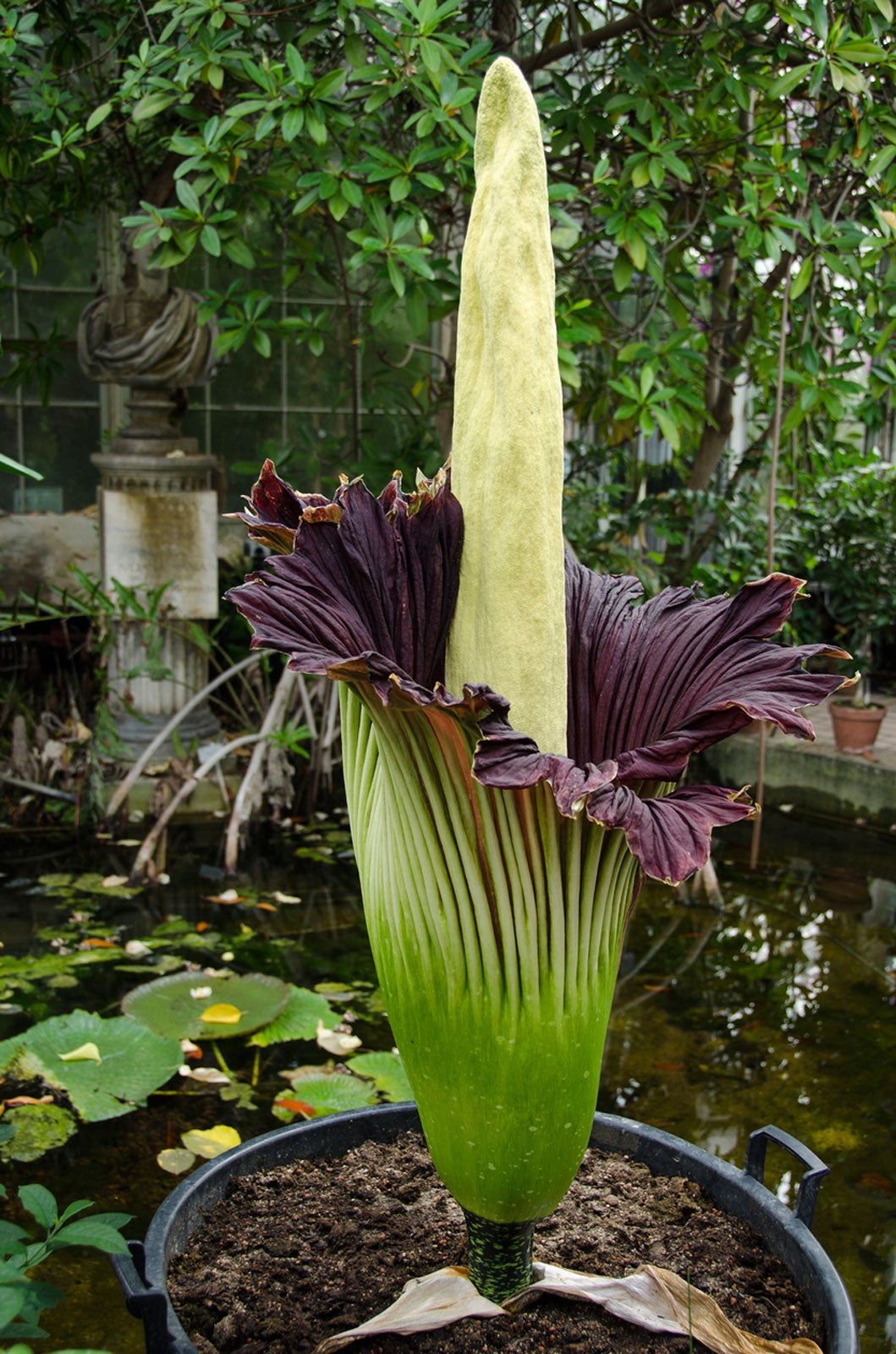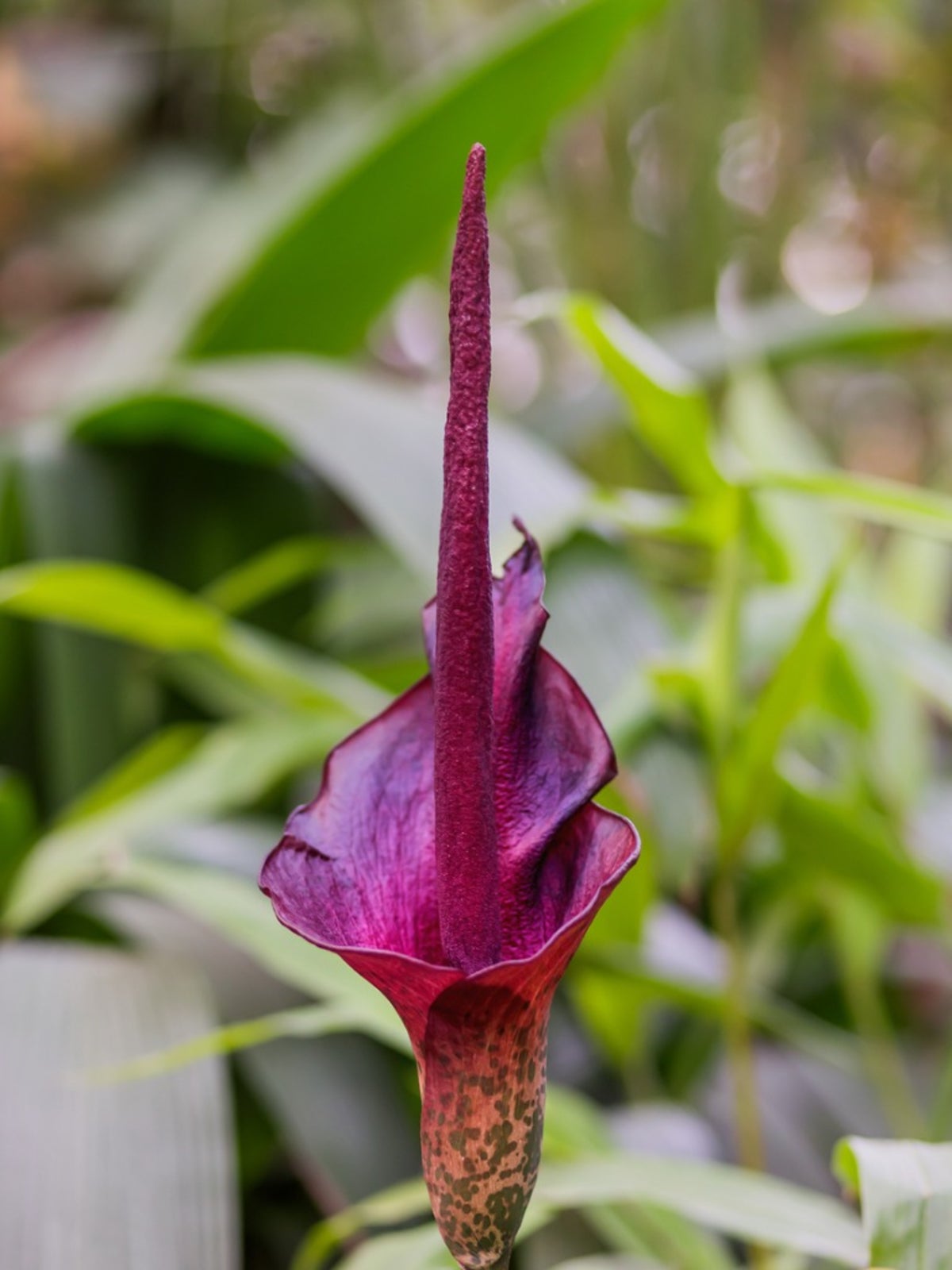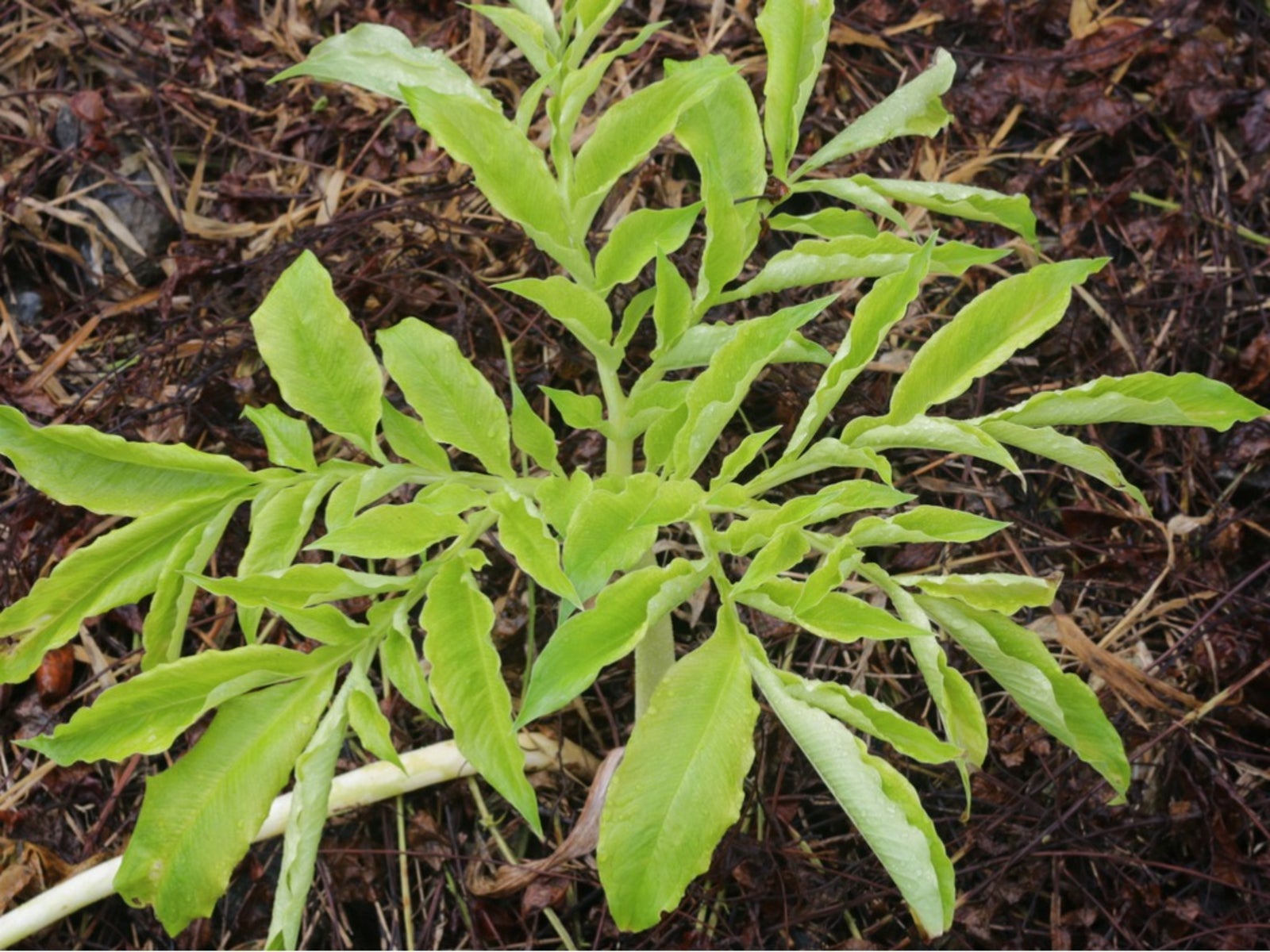Corpse Flower Facts – How To Grow A Corpse Flower Houseplant

What is a corpse flower? Amorphophallus titanum, more commonly known as corpse flower, is one of the most bizarre plants you can grow indoors. It is certainly not a plant for beginners, but definitely is one of the biggest oddities of the plant world.
Corpse Flower Facts
A little bit of background will help determine the care of these unusual plants. Corpse flower is an aroid that is native to the jungles of Sumatra. It will take about 8-10 years before it actually blooms. But what a show when it does! The inflorescence can grow up to 10 feet (3 m.) tall.
Although the inflorescence is very large, the flowers are much smaller and found deep inside the base of the spadix. The spadix actually heats up close to 100 F. (38 C.). The heat will help carry the odor of rotting meat that is produced by the plant. The foul odor attracts the corpse flower pollinators in its native environment. There is a ring of female flowers, which open first in order to prevent self-pollination. The ring of male flowers then follows.
After pollination, fruits are produced. They are eaten by birds and dispersed throughout the wild.
Corpse Flower Care
Can you grow a corpse flower houseplant? Yes, but you need to be aware of a few critical things for best results:
- These are understory plants in the wild, so bright indirect light, or dappled sun at the most, would be needed.
- Being from the Sumatran jungle, these plants like humidity of 70-90%.
- Be sure not to allow corpse flowers to go much below 60 F. (18 C.). Daytime temperatures should ideally be around 75-90 F. (24-32 C.).
- Corpse flower only produces one leaf (although it is a giant one)! At the end of each growing season, the petiole and leaf will rot away. At this point, you should take the corm out of the pot, wash the soil away and repot into a larger pot. Be careful not to nick the corm or it will rot. It is said that the plant will not flower until the corm reaches 40-50 lbs (18-23 kg.).
- Never allow corpse flower to dry out completely or it can go dormant. Allow just the surface to dry out a bit, and then water it again. On the opposite end, don’t allow this plant to sit in water or stay too wet.
- Be sure that you have plenty of room to grow this plant. Each year it will get bigger and bigger, and can grow to 10 feet (3 m.) or more depending on the conditions you give it.
- As far as fertilizer, you can fertilize (diluted) with every watering during growing season. If you prefer, you can topdress with an organic fertilizer a couple times during the active growing season. Stop fertilizing near the end of the growing season when growth slows.
The corpse flower houseplant definitely is an oddity, but it would definitely be newsworthy if you can get this plant to bloom in your home after 8-10 years. Two things to keep in mind if this does occur: The inflorescence only lasts 48 hours. This may be a good thing, though, since the smell alone may run you outdoors!
Gardening tips, videos, info and more delivered right to your inbox!
Sign up for the Gardening Know How newsletter today and receive a free copy of our e-book "How to Grow Delicious Tomatoes".
-
 Looking For Plants To Give You The Soft And Fuzzies? Try These 5 Fuzzy Leaf Plant Options
Looking For Plants To Give You The Soft And Fuzzies? Try These 5 Fuzzy Leaf Plant OptionsLovers of texture, drama, silver foliage and tactile plants will adore these special sensory garden additions. These fuzzy leaf plant options will leave you all aglow
By Susan Albert
-
 Get Ready For A Summer Of Hummers! Grow These Full Sun Hummingbird Plants and Flowers
Get Ready For A Summer Of Hummers! Grow These Full Sun Hummingbird Plants and FlowersIf you’re lucky enough to enjoy a sunny backyard, make sure you are maxing out on your pollinator opportunities and grow these full sun hummingbird plants and flowers
By Tonya Barnett
-
 Voodoo Lily Propagation : Tips For Propagating Voodoo Lily Plants
Voodoo Lily Propagation : Tips For Propagating Voodoo Lily PlantsPropagating voodoo lily couldn't be easier if you already have one or a gardening buddy has one. Division is the best method of voodoo lily propagation and may even be done by beginner gardeners, but seeds are possible with a little know-how too. Learn more here.
By Bonnie L. Grant
-
 Caring For Voodoo Lilies: Growing A Peony-Leaf Voodoo Lily Plant
Caring For Voodoo Lilies: Growing A Peony-Leaf Voodoo Lily PlantVoodoo lilies are perhaps best known for the unique scent of their blooms, which is described as smelling like rotting flesh. Learn more about growing a peony-leaf voodoo lily in this article. Click here for additional information.
By Darcy Larum
-
 Voodoo Lily Info: Information On How To Plant A Voodoo Lily Bulb
Voodoo Lily Info: Information On How To Plant A Voodoo Lily BulbVoodoo lily plants are grown for the gigantic size of the flowers and for the unusual foliage. The flowers produce a strong, offensive odor similar to that or rotting meat. Learn more in this article.
By Jackie Carroll